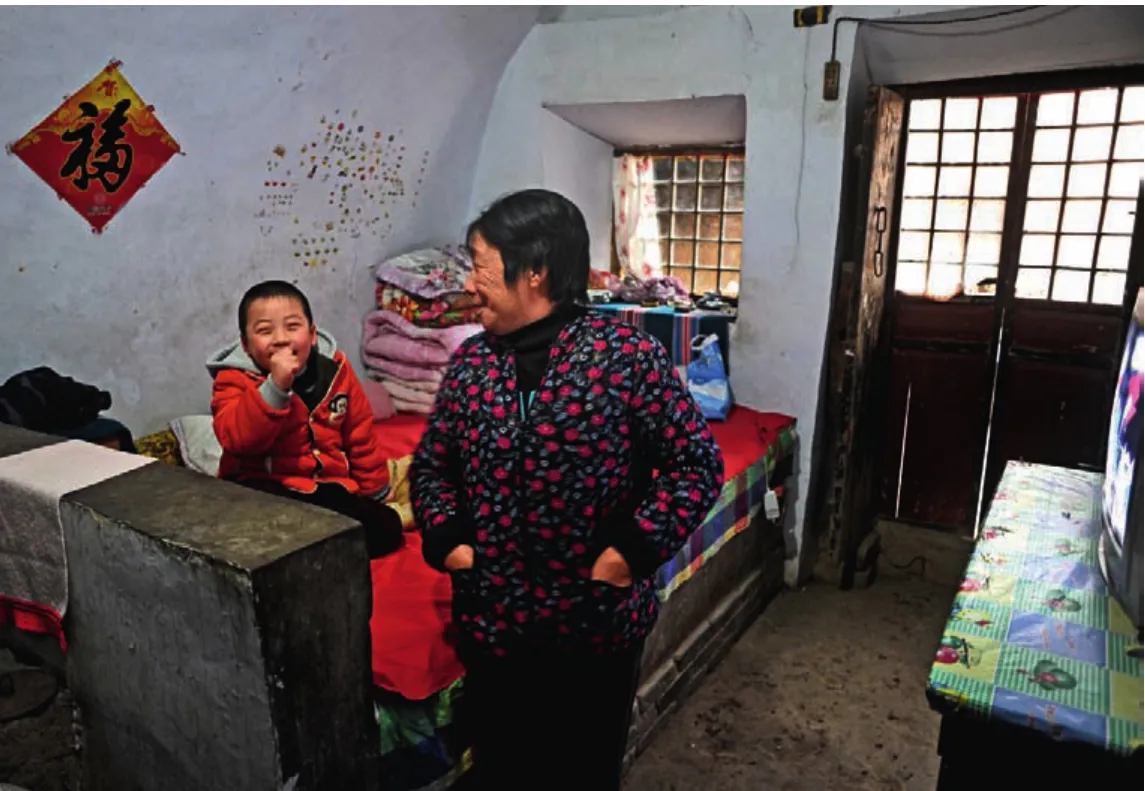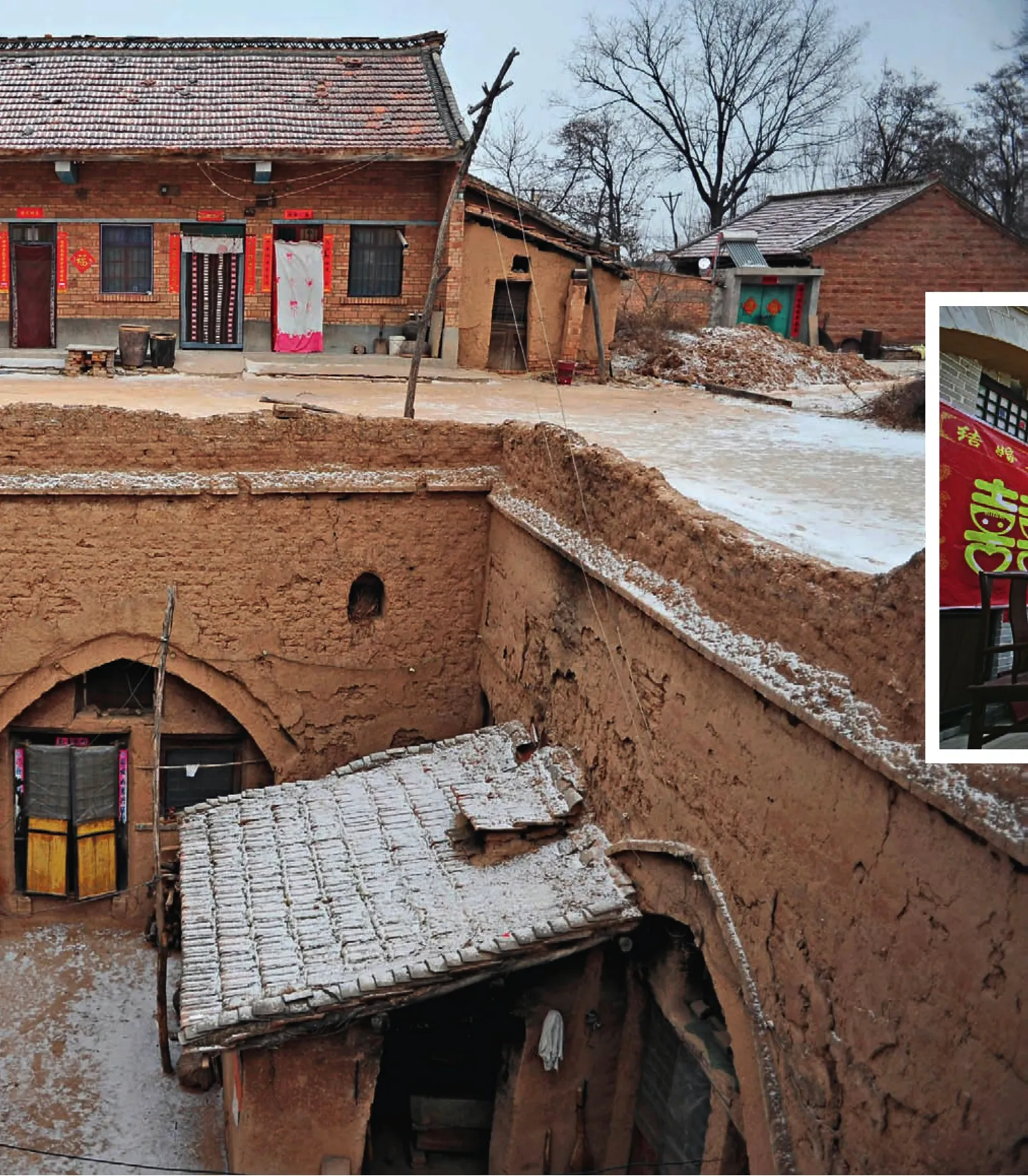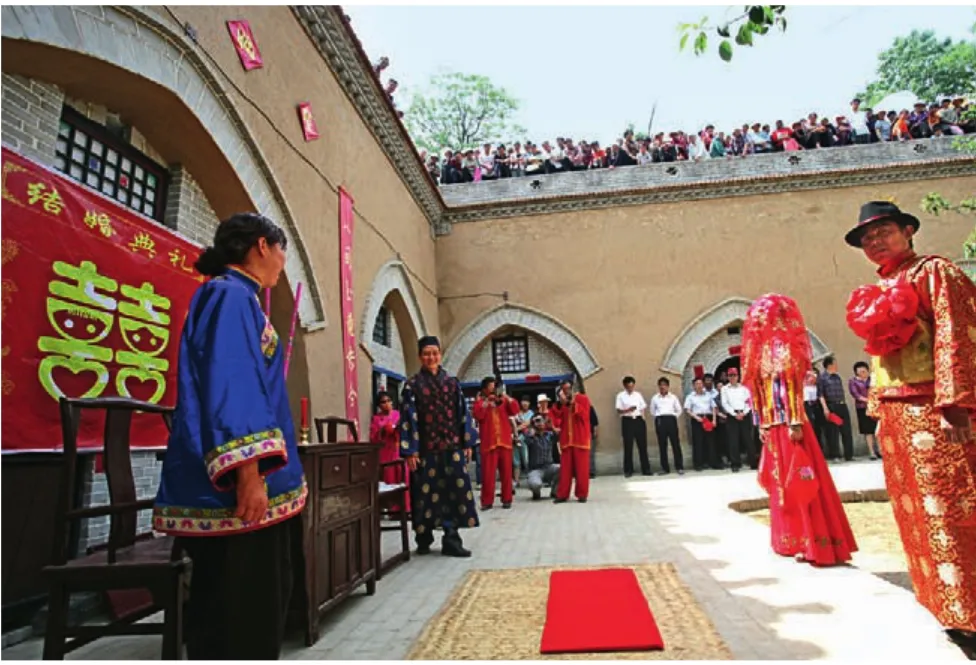Subterranean Serenity
By LI YICHUAN & LI SONGWEN
Subterranean Serenity
By LI YICHUAN & LI SONGWEN

Grandmother and grandchild in their cave home.
R ED bricks, gray tiles, leafless trees, contented livestock, and people passing the time of day as they go about their business are all everyday elements of a village winter scenario on China’s Central Plains. Such is the animated, industrious world above ground in Beiying Village, Shaanxian County, Henan Province. The ambience of the sunken courtyard dwellings below ground level, however, is more tranquil by far.
After entering the doorway and walking 10 or more meters we arrive at the cave dwelling of village elder Jing Jianchang. It is neat and tidy, with chopped firewood in one corner, a hen coop in the other, and a recess where persimmons are stored in straw. There is also cellar for storing sweet potatoes.
Looking at the eight other sunken courtyard dwellings in each direction, I try to calculate the amount of labor it took to complete this huge project. According to Jing Jianchang, it takes a family two to three years to complete such a 1-1.3 mu (15 mu equals one hectare) cave abode.
After excavating a cave, there is still anti-seepage and drainage work to be done. These courtyards include seepage wells that accumulate rain and discharge waste water. “Besides the seepage well I also built a protective wall with five layers of tiles, which look like eyelashes. They prevent rain from flowing into the cave,” Jing Jianchang said.
The subterranean dwelling’s main feature is its amenable, year round temperature of about 20 degrees Celsius that keeps it warm in winter and cool in summer. The kang (heatable brick bed) indoors is connected to a stove, which makes it cozy in the cold weather.
The fengshui of any particular site is considered vital to the building of a sunken courtyard dwelling. According to traditional Chinese belief, the fengshui of a home influences the fate of the family. Fengshui masters are accordingly called in to help decide on the location and size of these dwellings, and the date that excavations should begin.
There are thousands of sunken courtyard dwellings scattered over the plateaus of Shaanxian County. Beiying Village is at the northernmost end of Zhangbian Plateau.
Large families generally live in these dwellings, senior members in the spacious main cave. At meal times the entire family gathers in the yard.
In another village we met 78-year-old Wu Yicao, whose home, built in the 1950s, has a hearth, kang, table and chairs, as well as pots, bowls, gourd ladles, basins and other daily use articles. It also includes a wing room, where the third son of her four children spent his wedding night. The smoke-hued ceiling and yellowed wall paintings testify to Wu’s long occupancy.

A sunken courtyard.
Professor Zheng Dongjun from theSchool of Architecture of Zhengzhou University told us that, although warm in winter and cool in summer, there are disadvantages, like bad ventilation and lighting, and pervasive damp after rain, to living in such cave dwellings. Parking is also a problem. “Owing to the influence of modern civilization, many people have decided to move out of their sunken homes,” Professor Zheng said.

SuNKEN hOMES
These days, seniors are the predominant occupants of cave homes because they are reluctant to leave their familiar environment.
“Some people left their caves after the 1990s, because they seemed the lesser of the two worlds above and below ground. If you proposed marriage to a girl, she would first ask which of the two you occupy. If your answer was below ground, she would doubtless turn you down,” villager Jing Sheng said. Many consequently chose to leave their sunken courtyard dwellings and build tile-roof houses above ground.
These days, seniors are the predominant occupants of cave homes because they are reluctant to leave their familiar environment. There are also small numbers of young people whose economic circumstances leave them no other choice. The liveliness and warmth of these sunken dwellings evaporates as more people leave them.
Curator Zhang Qi of the Cultural Center of Shaanxian County told us that several hundred sunken courtyard dwellings in his county disappear each year.

A wedding ceremony performance attracts locals and tourists.
Local authorities are now considering restoring these subterranean abodes to their former vitality and glory. The Shaanzhou Sunken Courtyards Scenic Spot is under construction, and the nearby Sunken Courtyard Folk Culture Garden theme park is almost complete. Meanwhile a hotel, tourist center and snack street are all taking shape.
Bai Liangxu, director of the scenic spot construction office, told us that the folk culture garden comprises more than 20 sunken courtyards connected by tunnels. Each yard has elaborately carved doors and windows, as well as lanterns, in a distinctive layout. There are also venerable farming, spinning, and stone milling tools and implements on display.
Tourist Yang Yizhong from Xi’an City, however, believes the original courtyards are most attractive. South of the Folk Culture Garden are about 20 courtyards in their original state. Yang Yizhong finally found what he was looking for there. However, life in the sunken courtyards which entails, “trees, but no village; a village, but no houses; sounds, but no people,” has gone forever.
Local governments are considering ways of protecting the 100 extant sunken courtyards. One is that of offering subsidies to villagers to continue living in their original sunken courtyards in efforts to conserve these dwellings.
LI YICHUAN & LI SONGWEN are reporters at the Dahe Daily.

